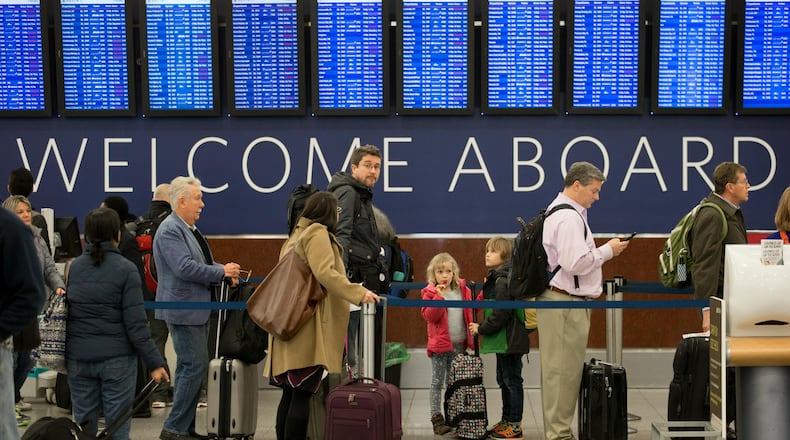On any given day, more than 100,000 planes shuttle more than one million people through the sky to destinations around the world.
A lot of that daily traffic passes right here through Atlanta's Hartsfield-Jackson International Airport, one of the busiest airports in the world.
The FDA predicts that withing 10 years, the Thanksgiving Day crush that hits Hartsfield-Jackson each year will be an everyday occurence.
Now the 4,700 acre airport which recently kicked off its 20 year plan for renovations and expansions has a starring role in an upcoming three-part documentary series produced by the BBC and PBS.
"City in the Sky" (PBS, Feb. 8 at 10 p.m. ET) takes viewers into the inner workings of the aviation industry revealing everything from baggage handling to air traffic control and the people who make it all work.
“Anyone who flies, from annual vacationers to daily business travelers, will be amazed what it really takes to get them from place to place safely and efficiently,” said Beth Hoppe, PBS’ Chief Programming Executive and General Manager in a statement. “This is an extraordinary series that jet-sets around the world to show the inner-workings of a fascinating global industry many of us take for granted.”
Hartsfield-Jackson is one of three busiest airports in the world and is within a three-hour flight time to more than 80 percent of the U.S. population.
While it may come as a surprise locals who have experienced hold ups at the ATL, the airport is featured in the series for having the most advanced in passenger and airline traffic flow in the country.
The three episodes of " City in the Sky" represent each phase of flight. "Departure" shows what goes into getting off the ground including how planes are built, how they take off and how passengers are herded on board.
Jim Harding, a design consultant who helped design the international terminal at Hartsfield-Jackson shares insight on how smart design helps keep things moving from S-shaped lines at security check to the "travelator" (the moving sidewalks between terminals) which gives you the perception that you are moving faster through the airport (you're not when you walk).
In episode two, "Airborne," explains how planes get up and stay up in the air and why flying is safer than it has ever been. The final episode, "Arrival," reveals the complex systems and technology required to get passengers and planes back on the ground.
Highlights of the series include a journey to Yakutsk, Russia to learn about the coldest airport in the world and to the Himalayan town of Paro to see the most dangerous airport in the world.
At the Boeing facility in Seattle, the series reveals the new material that has led to the biggest advance in airplane design in almost a century and other little known aspects of the industry such as the site of the largest luggage storage facility and a look at the tanks in Europe and southeast America that store and transport jet fuel through underground pipes.
About the Author
Keep Reading
The Latest
Featured



